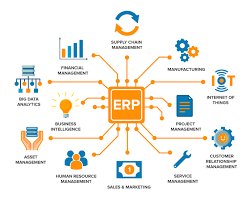CRM stands for Customer Relationship Management and it is a system or software that is used by professionals, especially businesses that have a marketing team, to track information between their company and their customers. Salesforce is an example of a CRM. Getting that experience working with Salesforce was a great way for all of us to understand CRM better. Other examples of CRM are HubSpot, Clickup, and ZenDesk. I worked with HubSpot a little bit during my Digital Marketing certification program through Google and that was interesting to learn about. I preferred Salesforce personally. It was easier to understand and operate. ERP stands for Enterpreise Resource Planning. ERP is a type of software that is used by professionals that handles day-to-day business activities including accounting, project management, and supply chain operations (oracle.com) There are similarities between CRM and ERP. They both help perform and manage businesses’ day to day tasks. They also both help optimize processes (itvision.com). Some difference between the two would be that CRM helps manage what is considered to be the outside of a company and ERP manages what would be considered the inside of the company. CRM is about managing the relationship between a company and their customers, with customers being outside the company. And ERP is about managing day to day tasks within the company, meaning the inside of the company (Oracle.com).
Erp and CRM – differences and similarities – sylwia wójcik. IT Vision. (n.d.). Retrieved March 2, 2023, from https://www.itvision.pl/en/experts/erp-and-crm-differences-and-similarities-sylwia-wojcik/#:~:text=ERP%20and%20CRM%20%E2%80%93%20similarities,take%20for%20a%20given%20employee.
What is Erp? Oracle. (n.d.). Retrieved March 2, 2023, from https://www.oracle.com/erp/what-is-erp/#:~:text=Enterprise%20resource%20planning%20(ERP)%20refers,compliance%2C%20and%20supply%20chain%20operations.

